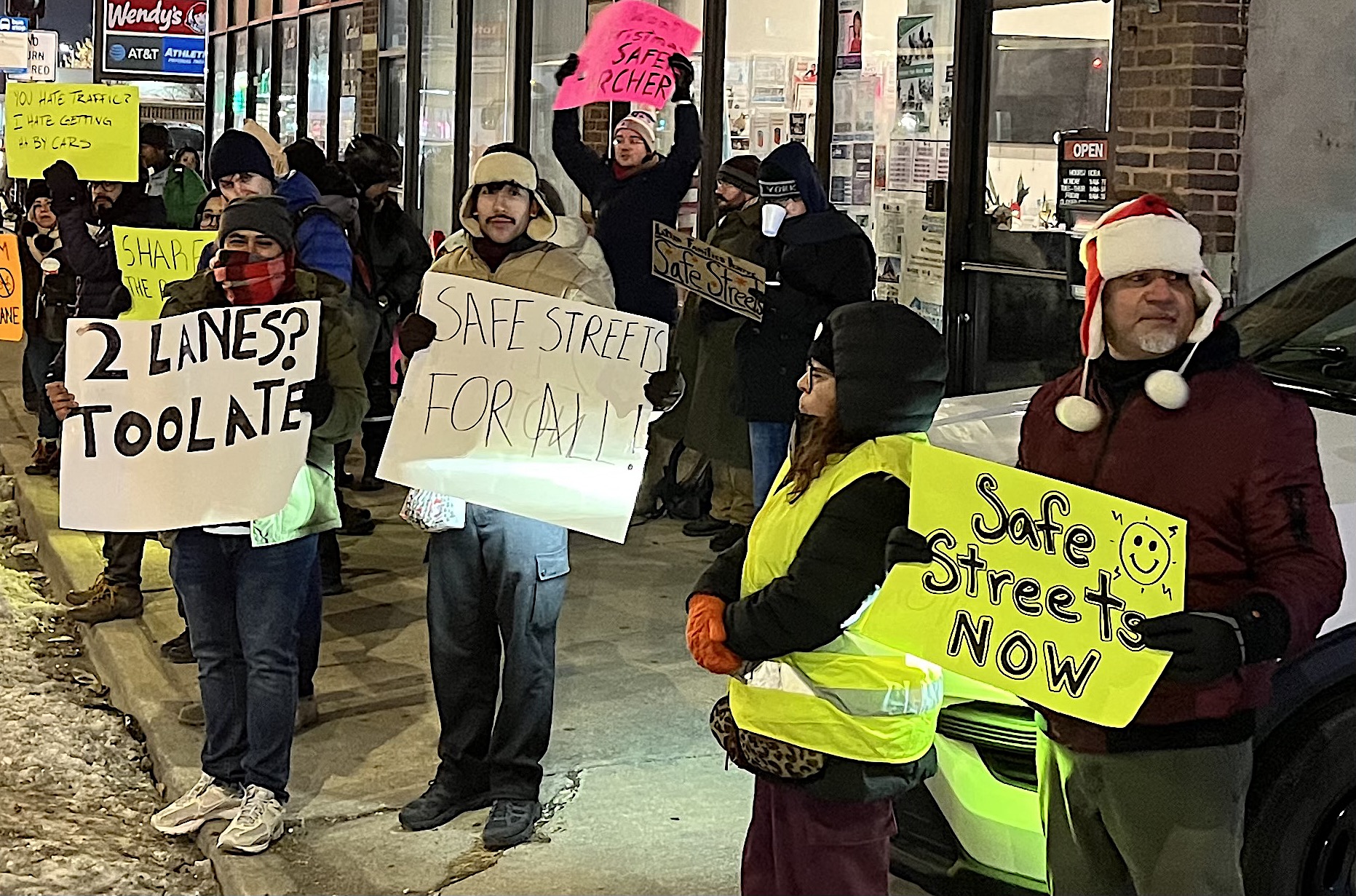This past Sunday, the usually forlorn bus transfer plaza above the Logan Square Blue Line station suddenly looked very different. Architects Krista Petkovsek and Kara Boyd had scrounged nearby alleys, rounded up a couple dozen used chairs, painted them orange, and scattered them around the plaza to spark a conversation about how to enliven the empty space, which is surrounded by an ever-increasing number of shops and restaurants.
Petkovsek and Boyd placed the chairs in two axes spanning the plaza last weekend, spurred by the Metropolitan Planning Council's Old Place, New Tricks placemaking contest. The duo, co-founders of Nushu Studio, found out about the contest from Katherine Darnstadt. Her firm, Latent Design, won last year's MPC placemaking contest for Union Station with its Blah Blah Blob! entry.
The two picked the Logan Square Blue Line station plaza as a prime example of the contest's call to "choose a space in the city that needed a little attention," Petkovsek said, and "to make some suggestions about what could happen in this space in the future." A splash of color and a place to sit, she explained, could be a "starting point to grab people's attention."
Not coincidentally, MPC will host three meetings in September about the plaza, part of a long-term Corridor Development Initiative that MPC is managing in Logan Square. The meetings, according to Petkovsek, are where people can tell the city "what they'd like to see happen here." The chairs are a good way to draw some attention to the plaza and advertise the upcoming meetings, "because not everybody sees social media," she said.
In preparing for the event, Petkovsek discovered that 7,000 people pass the plaza each day: 5,625 enter the Blue Line subway there every day, 300 get on or off the 56-Milwaukee bus on the northbound side, scores of people use the Divvy station there, hundreds board and alight the 76-Diversey bus, and plenty of people just walk through.
Petkovsek and Boyd wanted to create a focal point for all that motion and activity precisely "because it's such a transit hub." Petkovsek cited the Akita dog statue at Tokyo's Shibuya rail station: "There's a whole story behind it, and everyone uses it as their meeting place. It's really cool."

Being outside and watching how people use the space is the right starting point for the CDI meetings and longer-term planning process. William H. Whyte, whose influential research revolutionized how people think about urban public space, based his work on observing people – yes, apparently that wasn't actually done 40 years ago.
In addition to the chairs, the architects set up two old wooden doors that they had painted with chalkboard paint. Residents and visitors had a chance to write down their thoughts about what they'd like on the plaza: Food trucks, shade, and a winterized bus waiting area. I added my own idea: sell the city-owned parking lot and use the revenue to fund improvements.
The upcoming CDI meetings, co-hosted by the Chicago Transit Authority, MPC, and the Departments of Transportation and Planning & Development, will create a vision for what can happen at both the plaza and the city-owned parking lot next door, at Emmett and Kedzie. The meetings will be on Tuesdays, September 9, 16, and 30, from 6 pm to 8 pm, at the Hairpin Arts Center.






